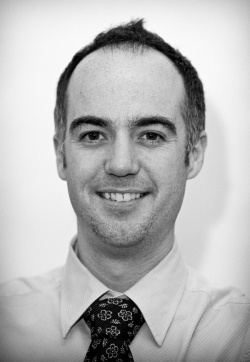Predicting future admissions
Mark Nicholls reports
The aim of the predictive modelling systems being trialled in the UK are to identify which people in a given population are the most likely to be admitted to hospital in the next 12 months and then focus preventive measures on them to try to avoid hospital admission. Primary Care Trusts (PCTs), which commission hospital services in the UK, are favouring the model as they try to cut costs during a period of increasing NHS financial constraints.

Dr Geraint Lewis of the Nuffield Trust – an independent health policy charitable trust aiming to promote analysis and informed debate on UK healthcare policy -- an expert in the concept of predictive modelling, explained: ‘Predictive models use relationships in routine electronic data for the whole population to make predictions at the individual level. Modellers typically use data from years one and two to make predictions in year three. The outcome of interest is typically an unplanned hospital admission. A predictive model allows analysts to assign a ‘risk score’ to every person in the population, reflecting their individual risk of unplanned hospital admission in the next year. Those people at high risk can be offered extra support to try to reduce their risk.’
Various models are used and include detail such as age, gender, patterns of hospital admissions and diagnostic codes of an individual, plus some area-based variables from the Census, including deprivation. The Combined Predictive Model adds to this data information about A&E attendances, out-patient visits, and variables taken from the GP electronic medical record, including lab tests, blood pressure readings and prescriptions.
The idea of devising predictive risk models first developed in the USA in the 1990s from ‘risk adjustment’ techniques used by insurers and has since been adapted for use in the UK health system.
Dr Lewis added: ‘We know that a small number of people in the population account for a large proportion of emergency hospital admissions. Unplanned hospital admissions are very costly so, in theory, if these high-risk people could be offered preventive care aimed at reducing hospital admissions, this could lead to large net savings.’
Predictive models are specifically ‘tuned’ to identify people at risk of unplanned hospital admission in the next 12 months, rather than those currently at high risk. This is important, said Dr Lewis, because of a phenomenon called ‘ regression to the mean’ , which states that patients who are currently at high risk will in future have fewer hospital admissions on average, even without intervention.
‘In the UK it tends to be PCTs rather than the hospital that uses predictive models, since commissioners can benefit financially from a reduction in hospital activity,’ said Dr Lewis.
Many PCTs have started using these models, though it is acknowledged that the interventions based on their predictions have been insufficiently evaluated so far.’
The Nuffield Trust is currently evaluating a range of interventions aimed at reducing emergency admissions, including the Partnerships for Older People Pilots (POPP), and Virtual Wards in Croydon, Devon, and Wandsworth, London.
But the potential benefits from predictive modelling - of patients not having the experience of an unplanned hospital admission; and a potential saving for health commissioners and providers by avoiding these admissions, need to be demonstrated in practice. ‘A crucial next step,’ said Dr Lewis, ‘will be to evaluate interventions based on predictive models, to find out whether net savings can be made in reality.’
Meanwhile, in Canada a group of Toronto hospitals are using the LACE predictive model to identify patients at risk of readmission in the next 30 days, where those patients at high predicted risk are offered a 30-day ‘ admission’ to a virtual ward when discharged. ‘The virtual ward operates in the same way as a hospital ward - a multidisciplinary team, daily ward rounds, a single set of notes - except that the patient stays at home,’ Dr Lewis explained.
The outcomes of the Toronto trial are likely to be closely monitored by UK hospitals following the recent announcement by the UK coalition government that hospitals will not be reimbursed for readmissions occurring within 30 days.
07.09.2010









